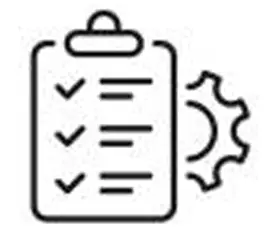유머 분류
Machine Coffee's History Of Machine Coffee In 10 Milestones
작성자 정보
- Shayna Hibner 작성
- 작성일
본문
What Goes On Inside a Machine Coffee Maker?
Coffee machines make it simple to take a hot cup of joe in the comfort of your own home. Some of the most popular models come with a programmable clock and even a built-in grinder.
Sensors control the heating element which revolves around a warming plate once you turn on the power. It also has a water tube constructed of aluminum that runs through it.
Cold-Water Tube
A machine coffee maker takes the water you pour into it and transforms it into your cup of coffee. This is accomplished by boiling water, then forcing it through a mechanism that produces high pressure. These machines can use up to 15 bars of pressure in comparison to coffee percolators which only work at one bar.
The reservoir resembles an empty bucket that is located at the bottom of the machine and is where the water is stored to make your drink. This reservoir has a hole in the bottom and connects on one side to the tube within the heating element, and on the other hand, to an white tube that is insulated and extends from the bottom of the machine to the faucet.
When you switch on the machine the water from the reservoir is being pumped into the heating chamber. The thermostat then instructs the machine to get heated. As the water heats up it expands and pushes onto a screen underneath a portafilter which has been filled with coffee brewing machines and tamped down. This pressure causes the screen to pierce through the filter, allowing the espresso to pour into your mug.
The espresso that comes from your machine is a delicious and rich pod coffee makers. It can come with varying levels of acidity, based on the type beans you choose. If your brew is unpleasant You can try an alternative filter or Stylish Coffee Machines coarsely ground beans. If the problem persists you should make an appointment with an authorized service technician to perform a de-liming cycle to clean out your machine. The most commonly cited cause for this issue is lime scale.
Hot-Water Tube
The white tube that has insulation at the bottom of your machine is the hot-water tubing. It carries hot water from the heating unit to the faucet that is on top of the coffee maker. The water then saturates your coffee grounds, bringing their flavor into the cup of coffee you are waiting for.
Some stylish coffee machines makers have an option to keep the water warm so that it's ready for you the moment you wake up. This is done making use of a heater that generates some steam. The steam is then directed into the spout, which keeps your coffee warm until capable of pouring it.
Although it could appear as if a coffee maker is complex and expensive however, the majority of models are simple to operate and have little moving parts. Regular cleaning and use will keep your machine in good condition for many years.
Many coffee machines that have a built-in grinder allow the addition of ground coffee from a container, secure the portafilter in place, and then flip the switch to begin the coffee brewing process. The pump will pressurize heated water until it reaches 220 psi when the switch is flipped.
The necessity of constantly refilling the reservoir is among the most annoying aspects of making coffee. A few manufacturers have designed coffee makers that can be connected directly to a water line and allow you to eliminate the reservoir altogether. If you're a DIYer, there are kits available to transform any machine into an espresso maker that has water line connections. The process is more involved and involves drilling holes into your machine to accommodate the adapter. This could weaken the structure of your coffee maker and cause cracking around the drilled areas. It is recommended that you purchase a purpose-built coffee maker that is designed to accept an open water line for best results.
Resistive Heat Element
The heater is made from metal and has a special resistance to electricity. It resists the flow of electricity without stopping it completely, and some energy is transformed into heat. This is what causes the heating of the water in the boiler of your coffee maker.
The heating element is situated on the left-hand side of machine's base. It is shaped like the filament of a lightbulb or the element of an electric toaster. It is comprised of an aluminum extrusion that has two sections, a tube for water to flow through and the resistive heating element itself (Check video here). The resistance in the coiled wire makes it get hot when it is given power.
When you turn on your coffee maker the element begins heating the aluminum water tube until it starts to boil. Then, the bubbles rise through the white tube and are sprayed onto your coffee grounds by the shower head. This water spray sucks up the essential oils from the coffee beans that are ground as it falls down and contains caffeine.
If your coffee maker isn't releasing hot water, it's likely because the pressure switch or heating element thermostat is not working properly. You can test both of these by using a multi-meter to perform the continuity test. Connect one pole to the electrical connector and the second to the flange body. It should display an amount that is less than 1. If the reading is not there, then you will need to change the thermostat or switch.
The other major component of your coffee machine that could be the cause of problems is the water pump or your reservoir. It can become clogged with lime, so you will have to run water and descaling agents through it.
Warming Plate
A warming plate is a heated metal surface that keeps the coffee warm after it has been prepared. This feature is popular with those who enjoy coffee at a restaurant and can be a valuable addition to the kitchen of a home. The warming plate is susceptible to rust and ruin the taste and taste, which is why it is essential to clean it regularly. Cleaning a coffee maker's heating surface is best done using an oxalic-based mixture and water.
Oxalic acid can be used as an effective cleaner to get rid of the rust that has built up on sinks, pipes and gas stove burners. It can also be used for cleaning various other household items. It is a highly efficient solution to clean the rusty warming plate of your coffee maker, and it can be purchased from most hardware stores. You should always be careful when using this product, since it can cause burns and other injuries if handled properly.
If you're cleaning a coffee maker's heating plate, first ensure that the coffee maker is disconnected. This will avoid any damage caused by the heat of the cleaning products. Rubber gloves are also recommended, since oxalic acid can be harsh on the skin.
Next, pour some white vinegar on the rusty area of the coffee maker's heating plate. This will react chemically with the baking soda and dissolving the rust. Then apply the rag or brush to scrub the area until it's clean. If your coffee maker is extremely rusted, you may need to repeat the process several times to make sure it is completely clean. Make sure that the oxalic acid is completely evaporated before you plug the coffee maker back in and begin using it again.
Aluminum Water Tube
When you switch on your machine, it will start making the coffee for you. It may seem simple enough, but there is lots going on the machine to transform just a few scoops of ground and some water into a steaming hot beverage.
The cold water is poured into the aluminum tube underneath the resistive heating element via a hole at the bottom of the reservoir. The aluminum water tube starts to heat up and when it is at its boiling point, bubbles start to form that push the water up the white tube within the middle of your coffee maker.
The hot water squirts out from the top of the tube and is then absorbed into a perforated disc called the shower head (or basket in certain machines). The hot water is sprayed onto the coffee grounds, taking in the oil essence.
The water flows through the coffee, then through the filter back up into your pot. This is all accomplished by the oscillating pressure generated by the pump. The expansion and contraction of the bubble boundaries creates a shearing force that extracts coffee particles from water, leaving a strong espresso like beverage left behind.
It is crucial to keep in mind that your machine is dependent on a myriad of components, all of which are interconnected. If you hear strange noises or feel vibrations it could be due to a loose component. Unsecure components can cause noise and weaken connections. This can result in more problems.
Coffee machines make it simple to take a hot cup of joe in the comfort of your own home. Some of the most popular models come with a programmable clock and even a built-in grinder.
Sensors control the heating element which revolves around a warming plate once you turn on the power. It also has a water tube constructed of aluminum that runs through it.
Cold-Water Tube
A machine coffee maker takes the water you pour into it and transforms it into your cup of coffee. This is accomplished by boiling water, then forcing it through a mechanism that produces high pressure. These machines can use up to 15 bars of pressure in comparison to coffee percolators which only work at one bar.
The reservoir resembles an empty bucket that is located at the bottom of the machine and is where the water is stored to make your drink. This reservoir has a hole in the bottom and connects on one side to the tube within the heating element, and on the other hand, to an white tube that is insulated and extends from the bottom of the machine to the faucet.
When you switch on the machine the water from the reservoir is being pumped into the heating chamber. The thermostat then instructs the machine to get heated. As the water heats up it expands and pushes onto a screen underneath a portafilter which has been filled with coffee brewing machines and tamped down. This pressure causes the screen to pierce through the filter, allowing the espresso to pour into your mug.
The espresso that comes from your machine is a delicious and rich pod coffee makers. It can come with varying levels of acidity, based on the type beans you choose. If your brew is unpleasant You can try an alternative filter or Stylish Coffee Machines coarsely ground beans. If the problem persists you should make an appointment with an authorized service technician to perform a de-liming cycle to clean out your machine. The most commonly cited cause for this issue is lime scale.
Hot-Water Tube
The white tube that has insulation at the bottom of your machine is the hot-water tubing. It carries hot water from the heating unit to the faucet that is on top of the coffee maker. The water then saturates your coffee grounds, bringing their flavor into the cup of coffee you are waiting for.
Some stylish coffee machines makers have an option to keep the water warm so that it's ready for you the moment you wake up. This is done making use of a heater that generates some steam. The steam is then directed into the spout, which keeps your coffee warm until capable of pouring it.
Although it could appear as if a coffee maker is complex and expensive however, the majority of models are simple to operate and have little moving parts. Regular cleaning and use will keep your machine in good condition for many years.
Many coffee machines that have a built-in grinder allow the addition of ground coffee from a container, secure the portafilter in place, and then flip the switch to begin the coffee brewing process. The pump will pressurize heated water until it reaches 220 psi when the switch is flipped.
The necessity of constantly refilling the reservoir is among the most annoying aspects of making coffee. A few manufacturers have designed coffee makers that can be connected directly to a water line and allow you to eliminate the reservoir altogether. If you're a DIYer, there are kits available to transform any machine into an espresso maker that has water line connections. The process is more involved and involves drilling holes into your machine to accommodate the adapter. This could weaken the structure of your coffee maker and cause cracking around the drilled areas. It is recommended that you purchase a purpose-built coffee maker that is designed to accept an open water line for best results.
Resistive Heat Element
The heater is made from metal and has a special resistance to electricity. It resists the flow of electricity without stopping it completely, and some energy is transformed into heat. This is what causes the heating of the water in the boiler of your coffee maker.
The heating element is situated on the left-hand side of machine's base. It is shaped like the filament of a lightbulb or the element of an electric toaster. It is comprised of an aluminum extrusion that has two sections, a tube for water to flow through and the resistive heating element itself (Check video here). The resistance in the coiled wire makes it get hot when it is given power.
When you turn on your coffee maker the element begins heating the aluminum water tube until it starts to boil. Then, the bubbles rise through the white tube and are sprayed onto your coffee grounds by the shower head. This water spray sucks up the essential oils from the coffee beans that are ground as it falls down and contains caffeine.
If your coffee maker isn't releasing hot water, it's likely because the pressure switch or heating element thermostat is not working properly. You can test both of these by using a multi-meter to perform the continuity test. Connect one pole to the electrical connector and the second to the flange body. It should display an amount that is less than 1. If the reading is not there, then you will need to change the thermostat or switch.
The other major component of your coffee machine that could be the cause of problems is the water pump or your reservoir. It can become clogged with lime, so you will have to run water and descaling agents through it.
Warming Plate
A warming plate is a heated metal surface that keeps the coffee warm after it has been prepared. This feature is popular with those who enjoy coffee at a restaurant and can be a valuable addition to the kitchen of a home. The warming plate is susceptible to rust and ruin the taste and taste, which is why it is essential to clean it regularly. Cleaning a coffee maker's heating surface is best done using an oxalic-based mixture and water.
Oxalic acid can be used as an effective cleaner to get rid of the rust that has built up on sinks, pipes and gas stove burners. It can also be used for cleaning various other household items. It is a highly efficient solution to clean the rusty warming plate of your coffee maker, and it can be purchased from most hardware stores. You should always be careful when using this product, since it can cause burns and other injuries if handled properly.
If you're cleaning a coffee maker's heating plate, first ensure that the coffee maker is disconnected. This will avoid any damage caused by the heat of the cleaning products. Rubber gloves are also recommended, since oxalic acid can be harsh on the skin.
Next, pour some white vinegar on the rusty area of the coffee maker's heating plate. This will react chemically with the baking soda and dissolving the rust. Then apply the rag or brush to scrub the area until it's clean. If your coffee maker is extremely rusted, you may need to repeat the process several times to make sure it is completely clean. Make sure that the oxalic acid is completely evaporated before you plug the coffee maker back in and begin using it again.
Aluminum Water Tube
When you switch on your machine, it will start making the coffee for you. It may seem simple enough, but there is lots going on the machine to transform just a few scoops of ground and some water into a steaming hot beverage.
The cold water is poured into the aluminum tube underneath the resistive heating element via a hole at the bottom of the reservoir. The aluminum water tube starts to heat up and when it is at its boiling point, bubbles start to form that push the water up the white tube within the middle of your coffee maker.
The hot water squirts out from the top of the tube and is then absorbed into a perforated disc called the shower head (or basket in certain machines). The hot water is sprayed onto the coffee grounds, taking in the oil essence.
The water flows through the coffee, then through the filter back up into your pot. This is all accomplished by the oscillating pressure generated by the pump. The expansion and contraction of the bubble boundaries creates a shearing force that extracts coffee particles from water, leaving a strong espresso like beverage left behind.
It is crucial to keep in mind that your machine is dependent on a myriad of components, all of which are interconnected. If you hear strange noises or feel vibrations it could be due to a loose component. Unsecure components can cause noise and weaken connections. This can result in more problems.

관련자료
-
이전
-
다음
댓글 0
등록된 댓글이 없습니다.






